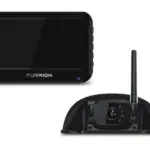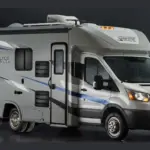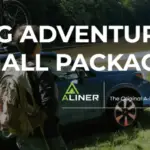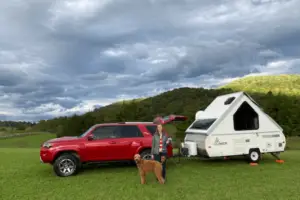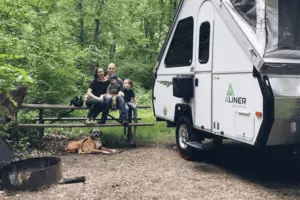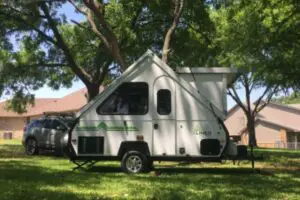Winterizing a camper is an essential step to protect it from the harsh winter weather. Failure to winterize a camper can lead to costly damage, especially if the temperatures drop below freezing.
An Aliner camper is no exception and requires proper winterization to ensure that it is ready for the next camping season.
Winterizing an Aliner camper involves a step-by-step process that can be done using either antifreeze or an air compressor. Using an air compressor is preferred because it is cleaner, safer, and more environmentally friendly.
However, both methods are effective in protecting the camper’s water system from freezing and causing damage. It is important to note that winterizing an Aliner camper is not only necessary for cold weather camping but also for storage during the winter months.
Read on!
Preparing for Winter
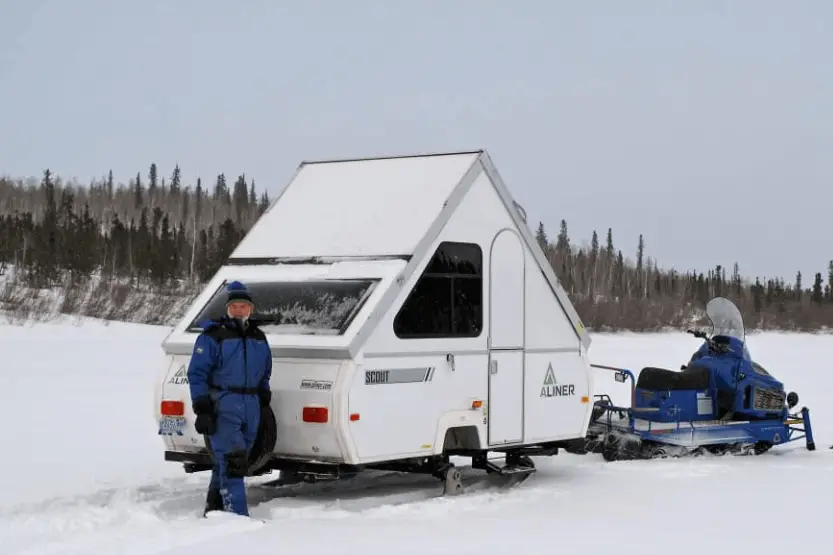
Winterizing an Aliner camper is an essential task to ensure that it stays in good condition and ready for use when the weather gets warmer. There are several steps that need to be taken to prepare the camper for winter, including draining the water system, cleaning, and storing.
Draining Water System
One of the most important steps in winterizing an Aliner camper is to drain the water system. This involves draining all the water from the water heater, water pump, and water lines. To do this, one can use an air compressor and a blow-out plug or antifreeze.
Before draining the water system, it is essential to turn off the water heater and bypass it. Also, make sure to open all the faucets and low point drains to allow the water to drain out completely.
Once the water has been drained, add antifreeze to the water lines to prevent any remaining water from freezing and causing damage.
Cleaning and Storing
After draining the water system, it is time to clean the camper thoroughly. This includes cleaning the kitchen area, bathroom, and any other areas that may have accumulated dirt and grime during the camping season.
Once the camper has been cleaned, it is time to store it for the winter. It is important to store the camper in a cool, dry place to prevent any moisture from building up, which can cause damage to the camper. Covering the camper with a tarp or blankets can also help to protect it from the elements.
When storing the camper, it is also important to take some additional steps to protect it.
This includes removing the battery and storing it in a warm, dry place, disconnecting the propane tanks, and insulating the camper to prevent any freezing temperatures from damaging the plumbing and water tanks.
In my experience, winterizing an Aliner camper is an essential task that should not be overlooked. By following the steps outlined above, one can ensure that their camper stays in good condition and is ready for use when the weather gets warmer.
Winterizing Your Aliner Camper
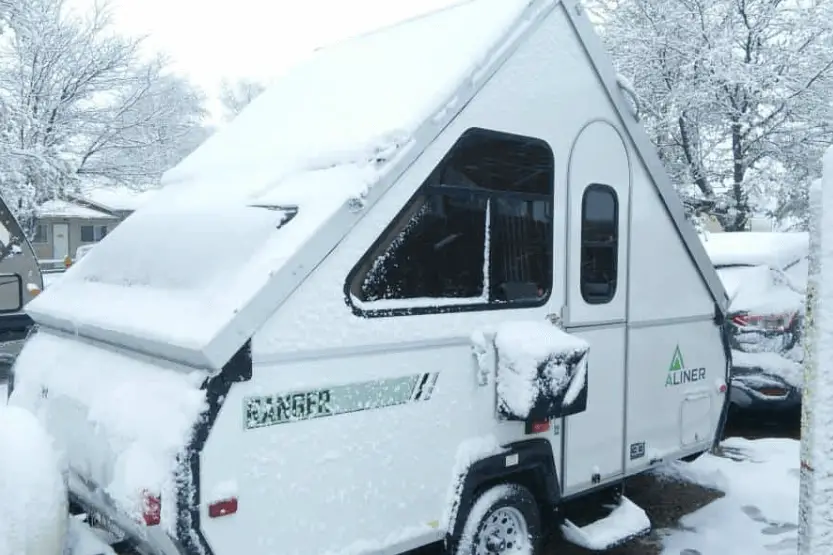
Before the freezing temperatures hit, it is crucial to winterize your Aliner camper properly. Winterizing your camper will prevent the plumbing system from freezing and causing costly damage. Here are the steps to follow when winterizing your Aliner camper.
Winterizing Plumbing System
The first step to winterizing your Aliner camper is to turn off the water pump and drain the water from the system. To do this, open all faucets, including the shower and toilet, and let the water drain out. Next, locate the low point drains and open them to drain any remaining water from the system.
Winterizing Water Heater
To winterize the water heater, turn off the propane and electricity to the unit. Next, locate the water heater bypass valve and turn it to the bypass position.
This will allow you to drain the water from the water heater without filling it with antifreeze. Finally, remove the anode rod from the water heater to drain any remaining water.
Winterizing Holding Tanks
To winterize the holding tanks, empty the black and gray water tanks and flush them out with clean water. Next, add antifreeze to the tanks using a bypass kit. Finally, add antifreeze to the freshwater tank and run the water pump until the antifreeze comes out of all the faucets.
Winterizing Showers and Toilets
To winterize the showers and toilets, add antifreeze to the lines using compressed air and a blowout plug. Next, add antifreeze to the P-traps in the sinks and shower to prevent them from freezing. Finally, add heat tape to any exposed plumbing to prevent freezing.
Winterizing Furnace
To winterize the furnace, turn off the propane and electricity in the unit. Next, remove the furnace exhaust pipe and cover the opening with a towel to prevent pests from entering. Finally, add antifreeze to the furnace drain to prevent any water from freezing and causing damage.
Winterizing your Aliner camper is an essential step to protecting your investment. By following these steps, you can prevent costly damage and ensure that your camper is ready to use when the temperatures rise.
How Many Gallons of Antifreeze Do I Need to Winterize the Aliner Camper?
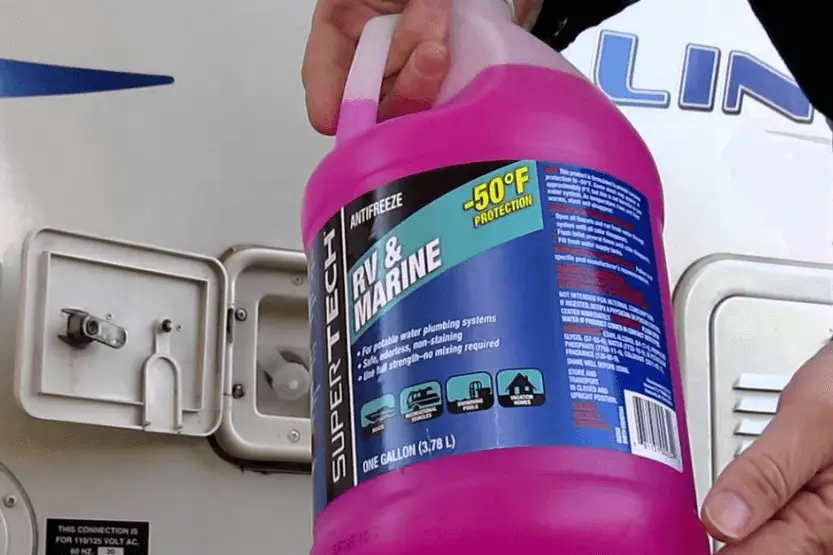
The amount of antifreeze you’ll need to winterize your Aliner camper will depend on the size of your plumbing system.
According to an article on the Aliner Owners Club website, you’ll need at least two gallons of antifreeze to winterize a camper with a standard plumbing system. This includes the water heater, water pump, and all of the water lines.
To determine exactly how much antifreeze you’ll need, you’ll need to calculate the volume of your plumbing system.
This can be done by measuring the length and diameter of each water line and multiplying those numbers together to get the volume in cubic inches. Then, divide the total volume by 231 to convert it to gallons.
It’s also important to use the correct type of antifreeze for your camper. According to an article on the RVshare website, you should use RV-specific antifreeze that is safe for use in potable water systems. This type of antifreeze is typically pink in color and can be found at most RV supply stores.
Based on research, you’ll need at least two gallons of RV-specific antifreeze to winterize a standard Aliner camper with a plumbing system.
To determine the exact amount you’ll need, you’ll need to calculate the volume of your plumbing system. It’s important to use the correct type of antifreeze to ensure the safety of your water system.
At What Point Do You Need to Winterize the Camper?
When it comes to winterizing your camper, timing is everything. The ideal time to winterize your camper is before the temperatures drop below freezing. This is because water left in the pipes and tanks can freeze and cause damage to the plumbing system.
According to an article on the Camping World website, the best time to winterize your camper is when the temperatures start to consistently drop below 32 degrees Fahrenheit.
This is usually in late October or early November in most parts of the United States. However, if you live in a colder climate, you may need to winterize your camper earlier in the season.
It’s important to note that winterizing your camper involves more than just draining the water tanks. You’ll also need to add antifreeze to the plumbing system, disconnect the battery, and take other steps to protect your camper from the harsh winter weather.
If you’re not comfortable doing this yourself, it’s best to take your camper to a professional to have it winterized.
In summary, it’s important to winterize your camper before the temperatures drop below freezing to prevent damage to the plumbing system.
The best time to do this is usually in late October or early November, but this may vary depending on your location and climate. If you’re not comfortable winterizing your camper yourself, it’s best to take it to a professional.
In Closing
In conclusion, winterizing your Aliner camper is an essential step to protect your investment and ensure it’s in good condition for future use. The process involves draining all the water and antifreeze from your plumbing system, adding antifreeze to the system, and protecting your battery.
By following the steps outlined in this article, you can effectively winterize your Aliner camper and prevent damage from freezing temperatures. Remember to start the process early to allow enough time to complete it thoroughly before the first freeze of the season.

We created RVcrown.com in 2020 as a way to geek about everything we’ve learned and are still learning about RVs. You’ll find in-depth articles covering reviews, specs, and features of the top RVs in the market. Contact me. Disclaimer: The information and advice provided in this blog are for educational and informational purposes only. The author does not guarantee any particular result or outcome from following the advice provided. See more about us.

